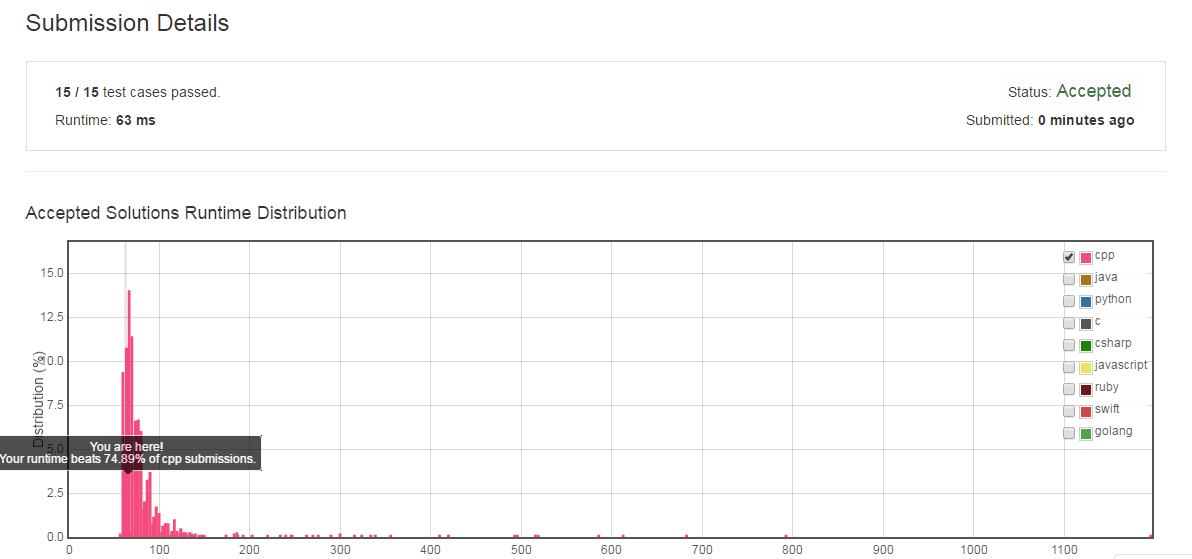Given a non negative integer numbernum. For every numbersiin the range0 ≤ i ≤ numcalculate the number of 1's in their binary representation and return them as an array.
Example:
Fornum = 5you should return[0,1,1,2,1,2].
Follow up:
- It is very easy to come up with a solution with run timeO(n*sizeof(integer)). But can you do it in linear timeO(n)/possibly in a single pass?
- Space complexity should beO(n).
- Can you do it like a boss? Do it without using any builtin function like__builtin_popcountin c++ or in any other language.
Hint:
- You should make use of what you have produced already。
因为最近在研究树状数组,被他的精妙所震撼。他巧妙的将一个数的二进制0与1的个数赋予新的含义。
int LowBit(int x)
{
return x & (-x);
}树状数组学习笔记:
看到了这个题,很自然的联想到LowBit的使用。
思路:记忆化搜索+LowBit
对于LowBit(x):
假设x的末尾0的个数为k则LowBit是计算2^k,同时也是计算末尾1在的位置(即所表示的数)
| i | bit | 2^k |
| 1 | 01 | 1 |
| 2 | 10 | 2 |
| 3 | 11 | 1 |
| 4 | 100 | 4 |
| 5 | 101 | 1 |
| 6 | 110 | 2 |
| 7 | 111 | 1 |
| 8 | 1000 | 8 |
| 9 | 1001 | 1 |
| 10 | 1010 | 2 |
| 11 | 1011 | 1 |
| 12 | 1100 | 4 |
| 13 | 1101 | 1 |
| 14 | 1110 | 2 |
| 15 | 1111 | 1 |
| 16 | 10000 | 16 |
当i与2^k相等时,意味着只有一个1,输出1
当i与2^k不相等时,比如我们看i=15,此时2^k=1,即末尾的1代表1,我们把末尾的1“去掉”,1111-->1110
即转化为求14的二进制数1的个数(当然得加上删除的1),也就是我们得利用先前求得的来计算i的二进制数1的个数。
#include <iostream>
#include <vector>
using namespace std;
class Solution {
public:
int LowBit(int x)
{
return x & (-x);
}
vector<int> countBits(int num) {
vector<int>vec;
vec.push_back(0);
for (int i = 1; i <= num; ++i)
{
if (i == LowBit(i))
{
vec.push_back(1);
}
else
{
vec.push_back(vec[i - LowBit(i)] + 1);
}
}
return vec;
}
};
int main()
{
Solution s;
vector<int>vec = s.countBits(16);
for (auto iter = vec.begin(); iter != vec.end(); iter++)
{
cout << *iter << endl;
}
return 0;
}
63ms




















 2763
2763

 被折叠的 条评论
为什么被折叠?
被折叠的 条评论
为什么被折叠?








